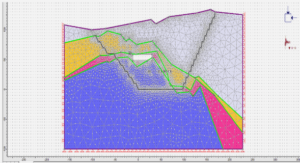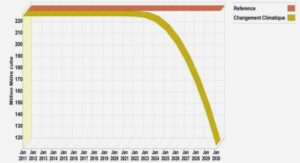Green coke, which is one of the raw materials of carbon anodes, is produced from the heavy residual fractions of petroleum (crude oil) by a process known as delayed coking [23]. The quality of anode-grade coke widely depends on the feed material used in petroleum refining as well as the operating conditions of refining, coking, and calcination processes. Structure, density, and volatile matter content can vary significantly as can the sulfur, metals, and ash contents.
The origin of the crude oil determines its composition which could vary significantly from one region to another. For instance, the crude oil from North America typically contains high S and is known as sour whereas in North Africa crude oil with low sulfur is called sweet crude [1, 11]. Four different kinds of products, gas, naphtha, gas oil and green coke, are produced by delayed coking process. One of the uses of green coke fraction is the production of carbon anodes for aluminum smelting. The production of different sorts of coke is influenced by the unit feedstock and operating conditions [11, 23].
The main types of green delayed petroleum coke can be classified as shot coke, sponge/fuel coke, sponge/honeycomb coke (also called anode-grade coke), and needle coke [11, 29]. They are explained in the following paragraphs.
Shot coke which is currently used as a fuel is a form of isotropic coke which shows identical properties in all directions [23, 30]. It is obtained from highly asphaltenic coker feedstock. It has a fine texture with uniform properties, and the shape of particles tend to be spheroidal with sizes ranging from buckshot to basketballs. The structure can also be layered like an onion. The aluminum industry has avoided using highly isotropic cokes, especially shot cokes, because of their high coefficients of thermal expansion (CTE) and low open porosity.
Fuel grade cokes have a less optimal macrostructure and a high coefficient of thermal expansion. Millions of tonnes of these cokes are burned directly for power generation and cement production. Sponge (honeycomb) coke has a heterogeneous, porous, and amorphous structure with a mixture of coarse and fine textures. It contains 10 to 15 percent of volatile hydrocarbons together with impurities such as sulfur, vanadium, nickel, and nitrogen. If green coke contains sufficiently low levels of sulfur and metals, it may be suitable for calcination to produce feedstock for carbon anodes for aluminum smelters. This higher quality green sponge coke is often described as anode-grade coke. Its pore structure is more prominent, and the coefficient of thermal expansion is lower compared to that of fuel coke.
While sponge coke is used in aluminum industry, needle coke is a premium product for steel industry [16, 23]. It seems similar to sponge coke in terms of porosity and has a characteristic layered structure which is referred to as anisotropic in general. It is chemically produced through cross linking of condensed aromatic hydrocarbons during coking reactions. The use of needle coke in steel industry is in graphite electrodes for electric arc furnaces. It has a low sulfur content (<0.5%) and a low coefficient of thermal expansion.
Global aluminum production has increased by about 10 million tonnes since 2009 and is estimated to reach about 61 million tonnes per year by 2016. The increase in aluminum production has increased the demand for anode-grade coke. The calcination industry is trying to produce the required quality of calcined coke to meet this demand. However, due to crude oil and refinery economics, the production of coke with higher sulfur and metal contents has been increasing. Refineries use heavy, sour crudes and produce coke with higher sulfur and metal (Ni, V) contents. Although light, sweet crudes are easier to process and give higher proceeds of liquid fuels, elevated price of light sweet crude drives refineries to process cheaper crudes and adapt their technologies accordingly. This results in a general shortage of low sulfur coke. The needs of aluminum industry for low sulfur coke due to environmental reasons are not necessarily supported by the refining industry. Cokes, considered as inconvenient for anode production in the past, are being used regularly in blends at varying levels today, and this trend is likely to continue [16, 31]. This has been also the subject of several papers and presentations since 2001.
The difference in the sulfur level of cokes used in classical anode blends by smelters has not increased significantly due to environmental constraints. However, broader range of cokes is being used in anode blends today. The greater range particularly applies to sulfur and vanadium levels. For instance, a sulfur level of 1-2% may be blended with cokes with sulfur levels up to 4- 6% to achieve a smelter anode coke specification of 2.5-3.0%. A good illustration of the range of S and V in green petroleum cokes (GPC) supplied by Rain CII for anode blends from 2000 to 2011.
CHAPTER 1 INTRODUCTION |




